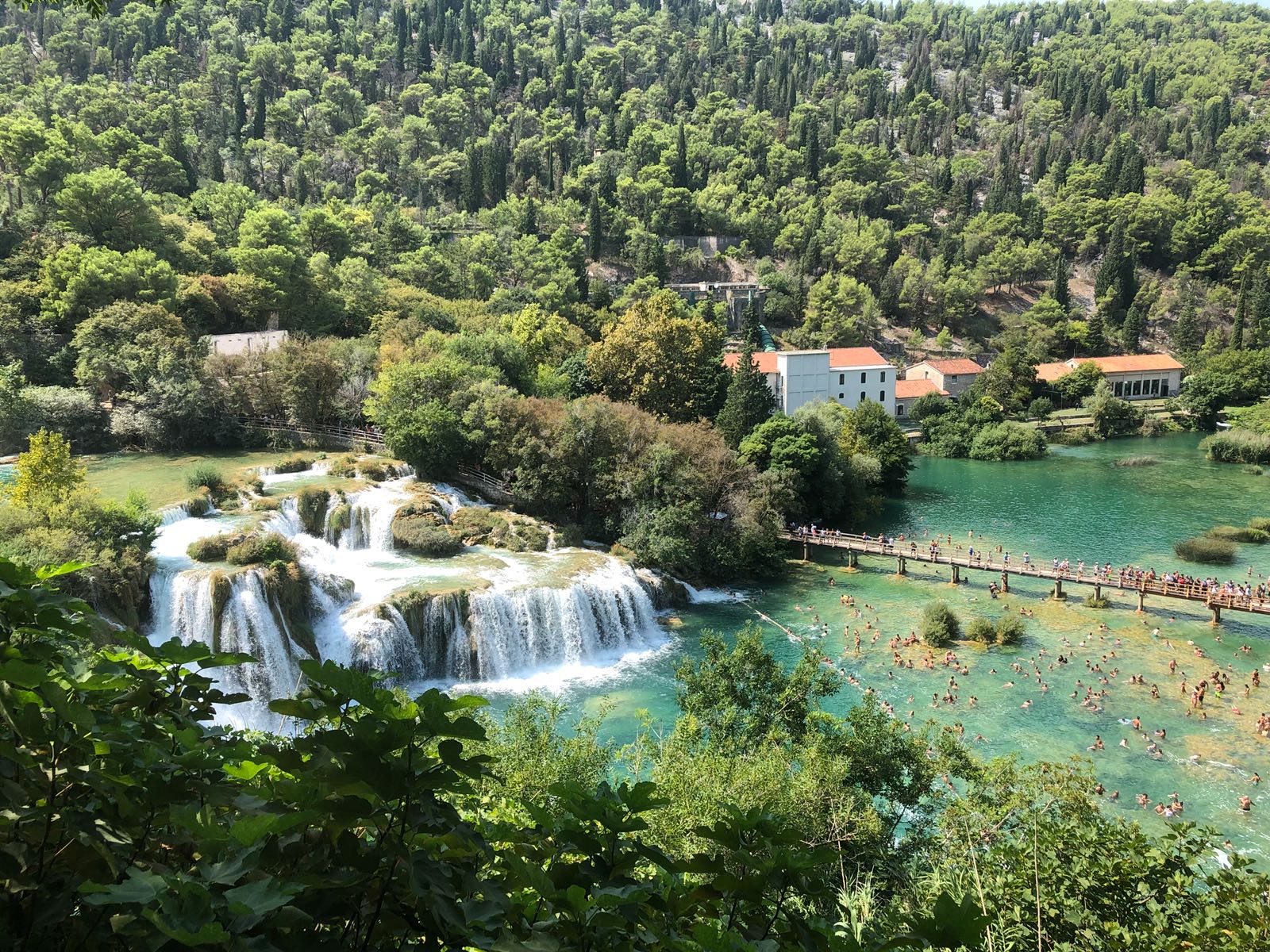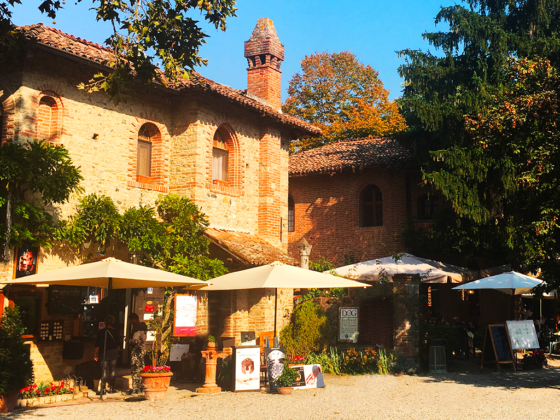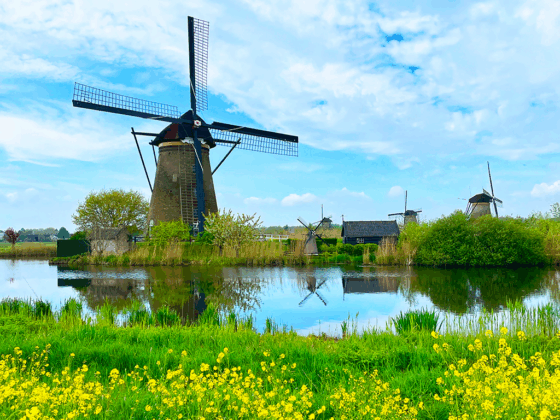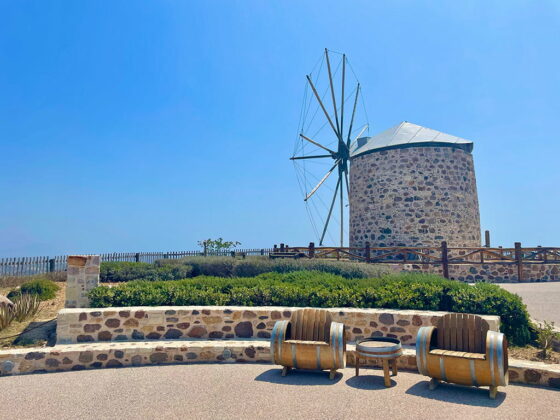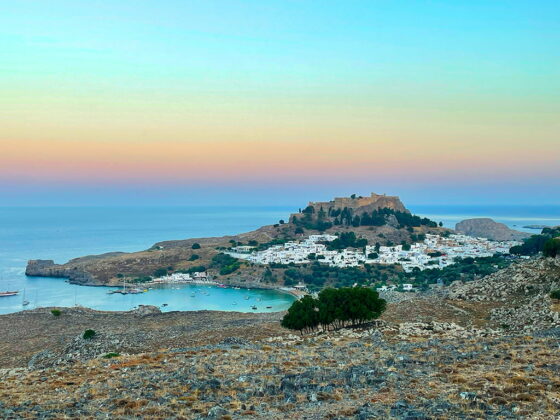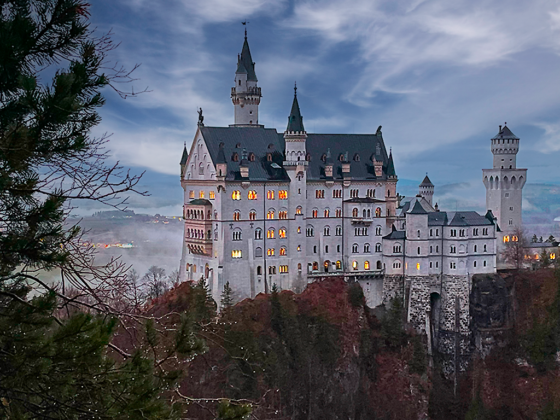The tour of Croatia was our first real trip together, we were still getting to know each other, taking measurements. We organised it on a weekend in July without planning too much, just choosing where to sleep (I couldn’t immediately give free rein to my obsessive compulsive mania to plan everything). We set off by car and let ourselves be carried away by the beauty that Croatia has to offer… sea, parks, culture… the ingredients are all there!
Tips for Trips: Although Croatia is part of the European Union, the currency is the Croatian kuna. The word kuna means ‘marten’ and goes straight back to the Middle Ages when animal furs – very often marten furs – were used in Croatia as a bargaining chip. One kuna is made up of one hundred lipa, which in turn means ‘lime tree’.
Update 01/01/2023: Croatia has joined the euro area, adopting only the euro as its currency.
- Itinerary in a nutshell
- Day 1: Fiume
- Day 2: Plitvice Lakes
- Day 3: Split
- Day 4: Klis Fortress, Žrnovnice shoreline and Hvar
- Day 5: Fortica Fortress and Dubovica Beach
- Day 6: Milna
- Day 7: Dubrovnik
- Day 8: Copacabana Beach and Sibenik
- Day 9: Krka National Park and Zadar
- Day 10: Zadar and Kraljičina plaža
- Day 11: Trieste and back
Itinerary in a nutshell
Our trip lasted 10 days. Driving 2400 km, we explored the entire coast of Croatia, starting in Istria and going all the way to the end of Dalmatia.
Tips for Trips: To get to Croatia from Italy you have to drive through Slovenia, where you have to buy a vignette to drive on the motorway. This can be purchased at petrol stations in Slovenia as well as in neighbouring countries and must be placed on the windscreen so that it is visible to the cameras at the entrance to each junction. Alternatively, you can take the E61 trunk road – state roads are marked in yellow – which connects Trieste to Rijeka and does not require a vignette.
We slept in Rijeka, Split, Hvar, Dubrovnik, Sibenik, Zadar and Trieste. We immersed ourselves in the most luxuriant nature by visiting the Plitvice lakes and the Krka National Park. We couldn’t miss out on visits to places connected to the Iron Throne (because we are a bit nerdy): Klis Fortress aka Meereen, Dubrovnik aka King’s Landing, Sibenik aka Braavos, Lovrijenac Fortress aka the Red Fortress, Minčeta Tower aka the House of the Undying, Diocletian’s Palace aka Daenerys’ Meereen Throne Room.
If you are curious to find out more, here are the stages of our journey day by day.
Day 1: Fiume
After more than five hours of driving, singing off-key songs, traffic, dancing, work in progress and stops at motorway service stations, we arrive in Rijeka in the late afternoon. We have chosen it as a stopping point to break up the journey and to be close enough to the next stage. We are only staying one day, so we waste no time and set off to explore.
Rijeka has a lively city centre around the main street, the Korzo, a long pedestrian street that in the evening fills with stalls selling food and souvenirs. Along the promenade, we come across the famous Civic Tower, built in the Middle Ages but with Baroque influences and a doorway full of embossed imperial coats of arms. We continue our walk along Ulica Ante Starčevića until we come to the Jelačić Square fountain where we stop to sample some local delicacies. We resume our wanderings up and down the narrow streets of the centre and find ourselves in front of what we later discover to be the famous Petar Kružić Stairway, a walk of 561 steps that climbs up the hill to Trsat Castle, an unexpected treasure that amazes us; its visit alone is worth a stop in Rijeka. It is one of the oldest fortifications in Croatia, retaining the characteristics of buildings from the early Middle Ages. In the summer, the castle hosts summer concerts, theatre performances and other cultural events, but it also has an atmospheric café where you can enjoy a cool drink against a backdrop of breathtaking scenery.
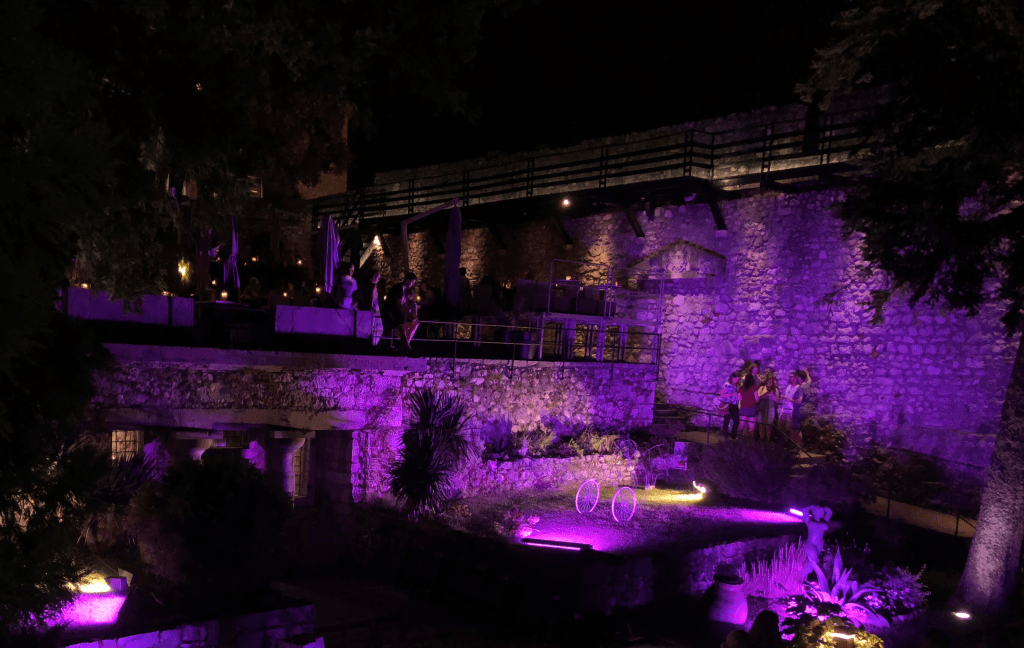
Day 2: Plitvice Lakes
Wake up early and hit the road: the Plitvice Lakes are Croatia’s oldest and largest park. The park is located halfway between Zagreb, the capital of Croatia, and Zadar in Dalmatia, and consists of 16 lakes fed by the Bijela Rijeka and Crna Rijeka rivers – White River and Black River – and underground springs, connected by a series of waterfalls, which flow into the Korana River. Of the 16 lakes, 12 are located in the upper part, in a dolomitic valley, surrounded by forests and connected by spectacular waterfalls, and four in the lower part, smaller and with lower vegetation. In addition to wooden footbridges, electric boats, boats and a small train are available to travel around the park.
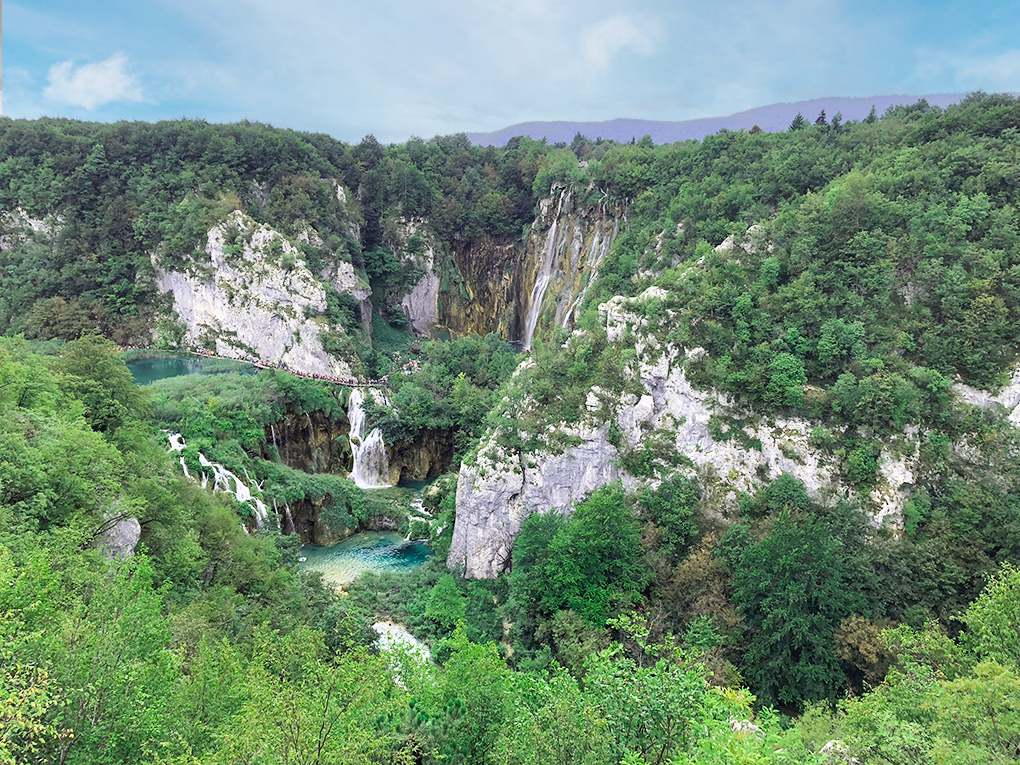
The park is divided into 4 trails organised into 7 routes of varying length and difficulty. Details of the routes can be found here. We followed route C, the right compromise between Paolino’s laziness and my desire to see everything. The route starts at the northern entrance (Entrance 1) and runs for 8 km, including both the upper and lower lakes. Once across Lake Kozjak by ferry, the hike continues along three more lakes to Lake Proscansko. The return can be done by panoramic train, we continued on foot back to the starting point.
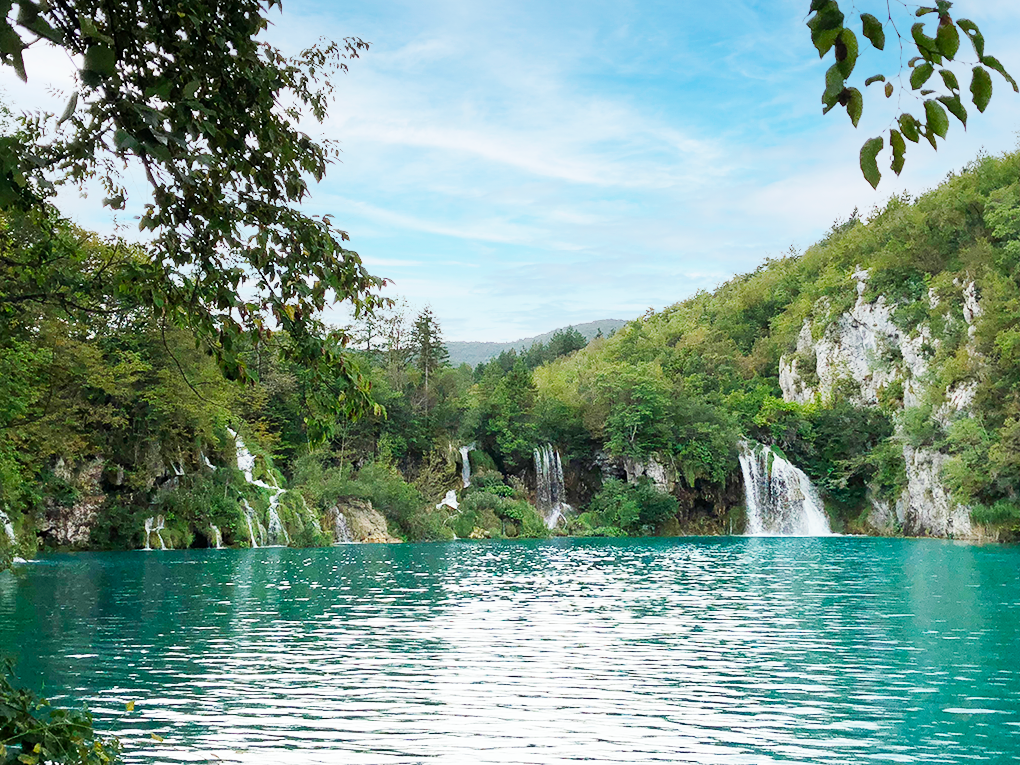
It is truly difficult to describe in words the pristine beauty of the place, the breathtaking colours of the lakes and the wonder of nature all around. Without a doubt, I can say that it is one of the most beautiful parks we have visited.
With beauty still in our eyes we head towards Split.
Day 3: Split
We start with a tour of the centre of Split. We stroll through the old city, starting from the People’s Square – the heart of the old city – and we feel as if we are travelling through time, from ancient Rome, through the Middle Ages among Romanesque churches and Gothic palaces, Renaissance facades and Baroque palaces.
The historical centre of Split is a labyrinth of alleys and narrow streets that branch off around Diocletian’s Palace, a UNESCO World Heritage Site. The palace is a rectangular building with four large corner towers and four smaller towers that can be accessed through four main gates: the Porta di Ferro (Iron Gate), which connects Piazza del Popolo to the palace, with its Renaissance clock and bells marking the passing of time; the Porta Aurea (Golden Gate), quadrangular in shape, with double doors whose façade is decorated with niches that housed sculptures depicting Diocletian, Maximian, Galerius and Constantius Chlorus; the more modestly decorated Porta Argentea, which was walled up from the Middle Ages until the middle of the last century and on the sides of which the remains of octagonal towers can be seen; the more modestly sized Porta Aenea, which, via the underground passages, provided access to the sea, but which today connects the palace to the Riva, Split’s lively waterfront, always full of tourists.
One of the most beautiful buildings in the palace is the Cathedral of St Doimus in which the different historical periods are evident through the various architectural elements, from Roman times to modern times. The hexagonal pulpit is from the 13th century, the altar ciborium, the frescoes of the four evangelists and the sarcophagus date back to the first half of the 15th century, while the high altar is from the 17th century. The church is dedicated to the Virgin Mary, while the bell tower is actually dedicated to St Doimus.
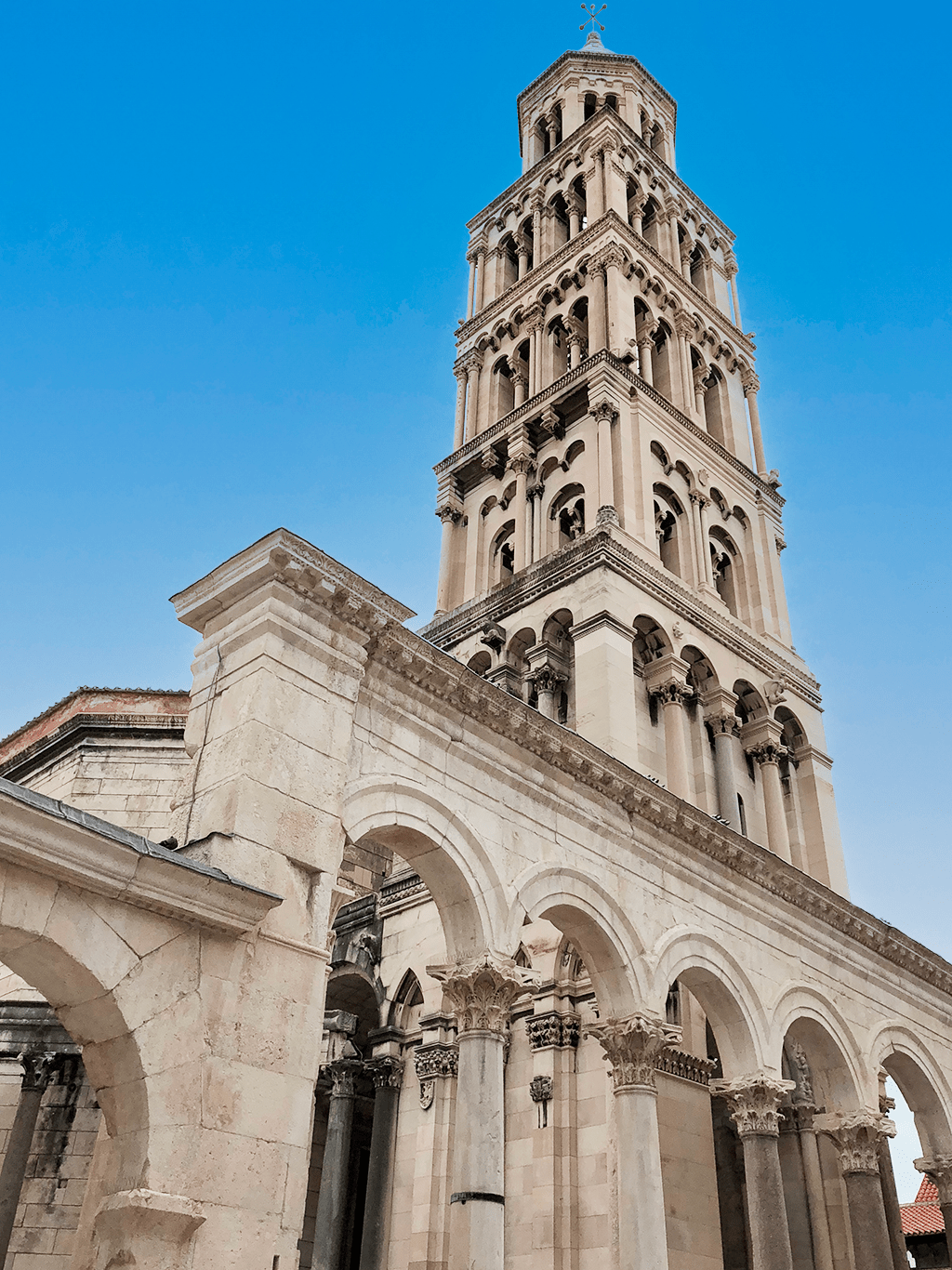
Next to the cathedral is the Temple of Jupiter dating back to the 4th century. Since the 7th century, when the last residence of Emperor Diocletian was converted into a cathedral, the Temple of Jupiter has served as a baptistery. The temple is richly decorated with reliefs carved in limestone depicting various motifs of flowers, leaves and heads of Roman gods and goddesses – including Jupiter, Apollo, Victory, Triton and Hercules – and is also adorned with a bronze statue of St John the Baptist by Croatia’s most famous sculptor, Ivan Mestrovic.
In the centre of the palace is the Peristyle, the central square of the palace and the place where city life took place. The red colour of the granite columns emphasises its ceremonial function as purple became the colour of the emperor. Today, the western part is enclosed by the palaces of the Split noble families, juxtaposed with its authentic columns and arches.
At the entrance to the imperial residence is the Vestibul, the first section of the imperial corridor leading from the Peristyle to the imperial flats. Externally circular, but internally it was once topped by a dome and adorned with four semi-circular niches that were filled with statues of unknown deities.
A staircase leads down into the Palace Underground, whose original function was to raise the Emperor’s flats above, but which also served as the Palace storerooms. Today, they are filled with stalls selling everything from paintings to bracelets and second-hand books, and in which exhibitions are often held. This basement was the setting for the place where Daenerys Targaryen kept her dragons in her palace. On the other side of the dungeon, through the Aenea Gate, we enter the Riva and this is where our tour of the palace ends.
In the afternoon, we indulge in some relaxation and sunbathing at the nearby Firule Beach, until sunset and along an aperitif to round off a wonderful day.
Day 4: Klis Fortress, Žrnovnice shoreline and Hvar
We move from Split to Hvar, but first make a diversion to visit two iconic locations from the fourth season of GoT.
The Klis Fort ress is a medieval fortress built at an altitude of 360 metres to control the invasion of enemies. Due to its strategic position between two mountains, Kozjak and Mosor, the fortress played a very important role in the defence of the whole of Dalmatia, especially when it came to the Ottomans and their invasions. Klis was used as the setting for the city of Meereen, the most significant metropolis in the Bay of Dragons, where Daenerys freed all the slaves from their chains.
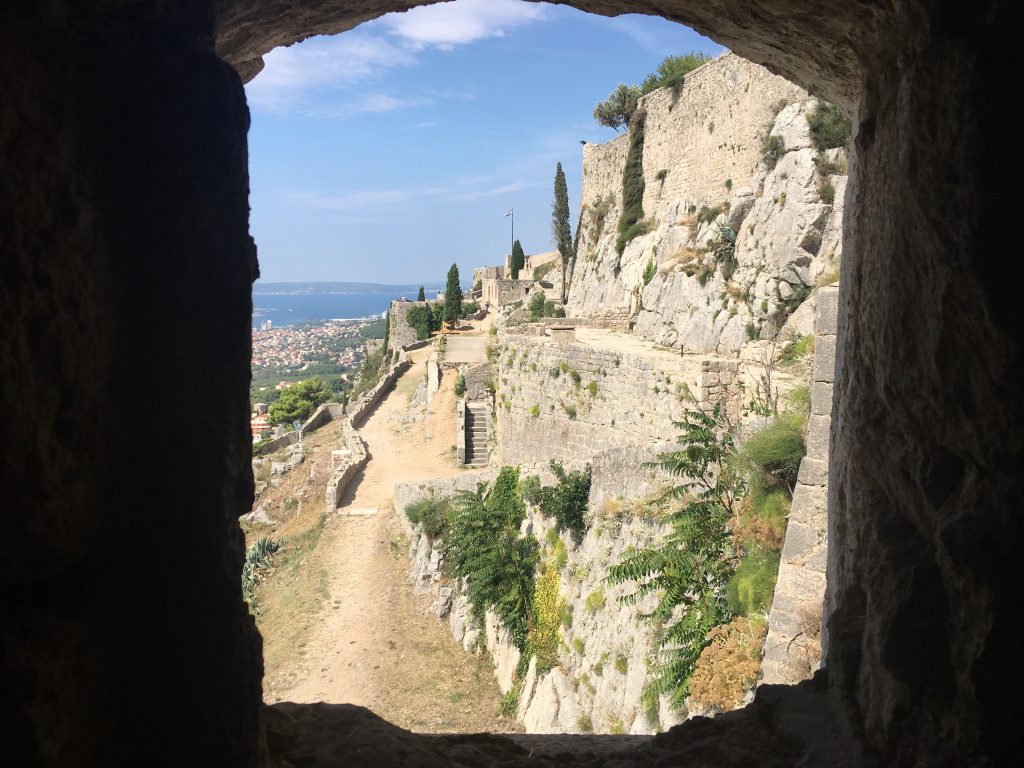
We move on to the village of Žrnovnica and take a walk on the banks of the river of the same name, an iconic place where a little Immaculate Grey Worm peeked at Daenerys’ faithful advisor Missandei while she was bathing.
We get in the car, we have a ferry not to be missed!
Tips for Trips: There are two possibilities for arriving on the island of Hvar. The first is to arrive at Stari Grad, the largest port on the island, located 1.5 km from Stari Grad and 17.3 km from Hvar Town. The second is to Sućuraj, which is 60 km from Stari Grad and 70 km from Hvar town, and connects the easternmost point of the island of Hvar and Drvenik on the mainland. We decide to take the Drvenik – Sućuraj route because it is less busy. There is no need to book a ticket in advance, just stand in line and wait to board one of the ferries that leave approximately every hour and a half. On arrival, however, you have to cross the entire island since Hvar town is on the opposite side… of course, the wild and beautiful landscape makes you appreciate the road.
We spend the remainder of the day in Hvar. The town, a small Venetian-style jewel, is surrounded by walls from the 13th century, which were reinforced during the Renaissance. We stroll through the streets of the centre, a succession of Gothic and Renaissance palaces, fortresses and Baroque buildings. In the centre of the city is Trg Svetog Stjepana, a rectangular square that starts from St Stephen’s Cathedral – a Baroque church built between the 16th and 17th centuries – and stretches all the way to the small harbour.
Overlooking the harbour is the Venetian Loggia, a Renaissance building that was once part of the Governor’s Palace, which was badly damaged by the Ottomans at the end of the 16th century. Immediately next to it is the Clock Tower added around 1800, replacing the previous one destroyed by the Ottomans.
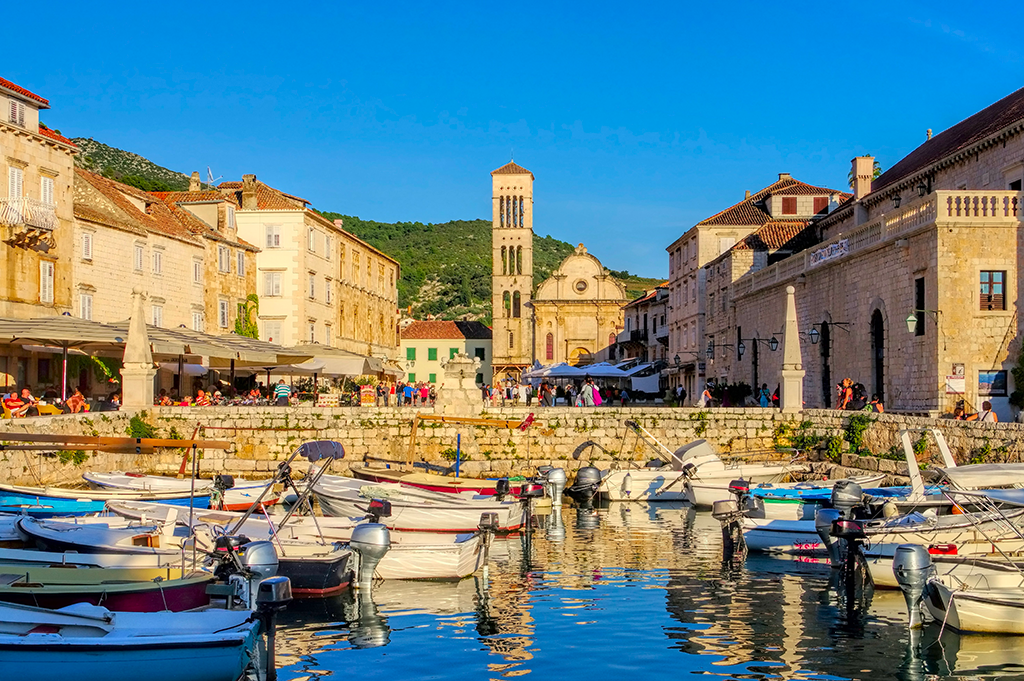
We spend the evening on the waterfront and after an excellent dinner, we take a long walk along the Fabrika – which flows into Šetalište Tonija Petrića – a long stone pavement that circles the entire harbour coastline between green parks, small restaurants and coves by the sea.
Day 5: Fortica Fortress and Dubovica Beach
In the morning, we return to Hvar to visit the famous Fortress Fortica (Spanish Fortress) overlooking the old town. Starting from the central square, we ascend the stairs through the old part of town and ascend the small serpentine path imbued with the scent of Mediterranean vegetation, until we reach the top of the hill where the fortress stands. It was built at the beginning of the 16th century and rebuilt after an explosion in the gunpowder store destroyed it in 1579, but it owes its final appearance to numerous subsequent alterations. The walls were reinforced by the French, the barracks and sentry towers were built by the Austrians and today it houses a collection of amphorae and ancient and medieval objects. The highlight of the fortress is undoubtedly the breathtaking view one enjoys once at the top: one dominates the entire city, the sea and the Pakleni Islands.
An afternoon dedicated to relaxing on one of Hvar’s most famous and beautiful beaches, Dubovica Beach does not disappoint our expectations. The pebble beach is nestled in a bay surrounded by a complex of small stone houses and a sea of intense hues. There is a small bar on the beach where you can enjoy Yspizchè cocktails in a local atmosphere.
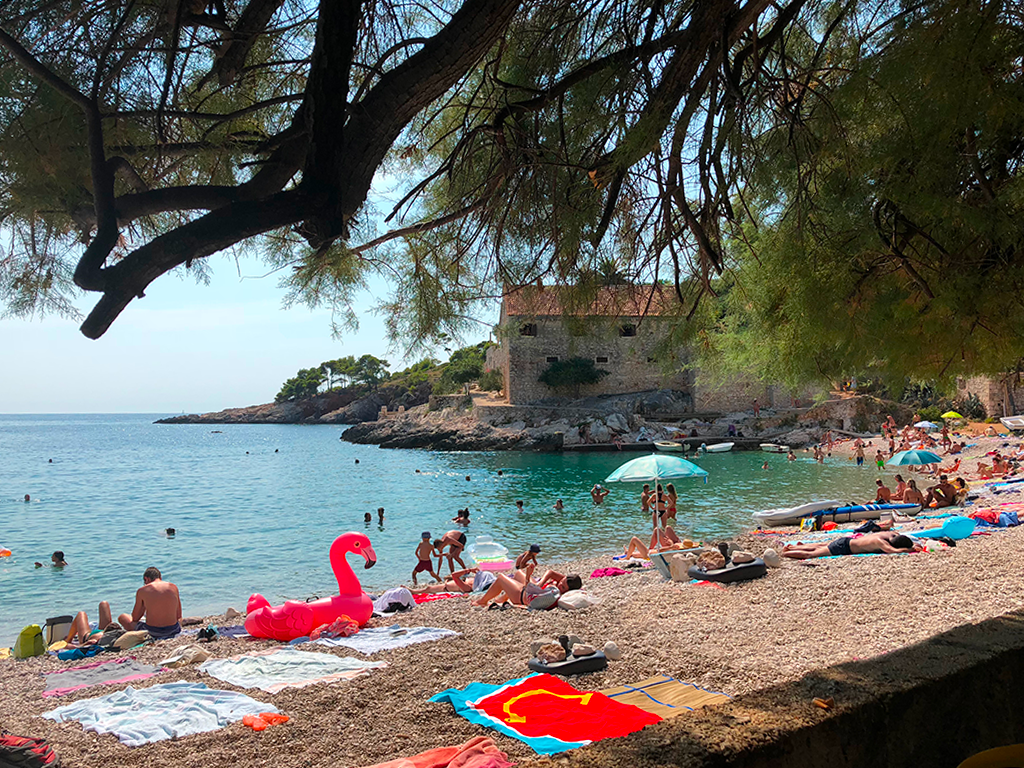
Day 6: Milna
Today we leave the island, so as not to stray too far, we spend the morning in the coves around Milna.
After lunch we cross the entire island to Sućuraj, where we take the ferry to Drvenik. Once back on dry land we depart for Dubrovnik.
Tips for Trips: Due to the sea outlet granted to Bosnia and Herzegovina, Croatia is split in two. To get as far as Dubrovnik you therefore have to cross the border. The controls, double on both sides, were quick and we had no problems. Since 2022, however, Croatia has opened a 2.4-kilometre bridge stretching from the Croatian mainland to the Peljesac peninsula, which connects with the southern part of the Croatian coast embedded between the sea and the Dinaric Alps. It thus connects its southern Adriatic coast, including Dubrovnik, with the rest of the country, bypassing a narrow strip of Bosnian territory.
Day 7: Dubrovnik
The day has finally arrived and we are about to visit Dubrovnik. The Old Town – King’s Landing for us – has been declared a Unesco heritage site. Gathered around the ancient walls, it is small enough to be walked around. We venture through the narrow streets that rise and fall in all directions from the central street among hidden squares, restaurants and cats snoozing on the steps of alleyways.
Our itinerary begins at Porta Pila, one of the three gates to the historic centre, dating back to 1537 and on top of which stands the statue of St Blaise, the city’s patron saint.
Through the gate we find ourselves in front of the Great Onofrio Fountain, one of the city’s most famous monuments, which for centuries was the main source of water supply in the city. From here, the Stradun, the main street – completely pedestrianised – runs through the entire old town, full of bars, cafés, shops and boutiques.
Walking down Stradun, one arrives at Piazza della Loggia, surrounded by beautiful palaces, such as Palazzo Sponza, the Loggia delle Campane, the Palazzo della Gran Guardia and the Minor Onofrio Fountain. Here you will also find the Baroque-style Church of San Biagio, dedicated to the city’s patron saint. Closing the street is the beautiful Clock Tower, built in the 15th century. Passing through the gate at its foot, one arrives at the city harbour.
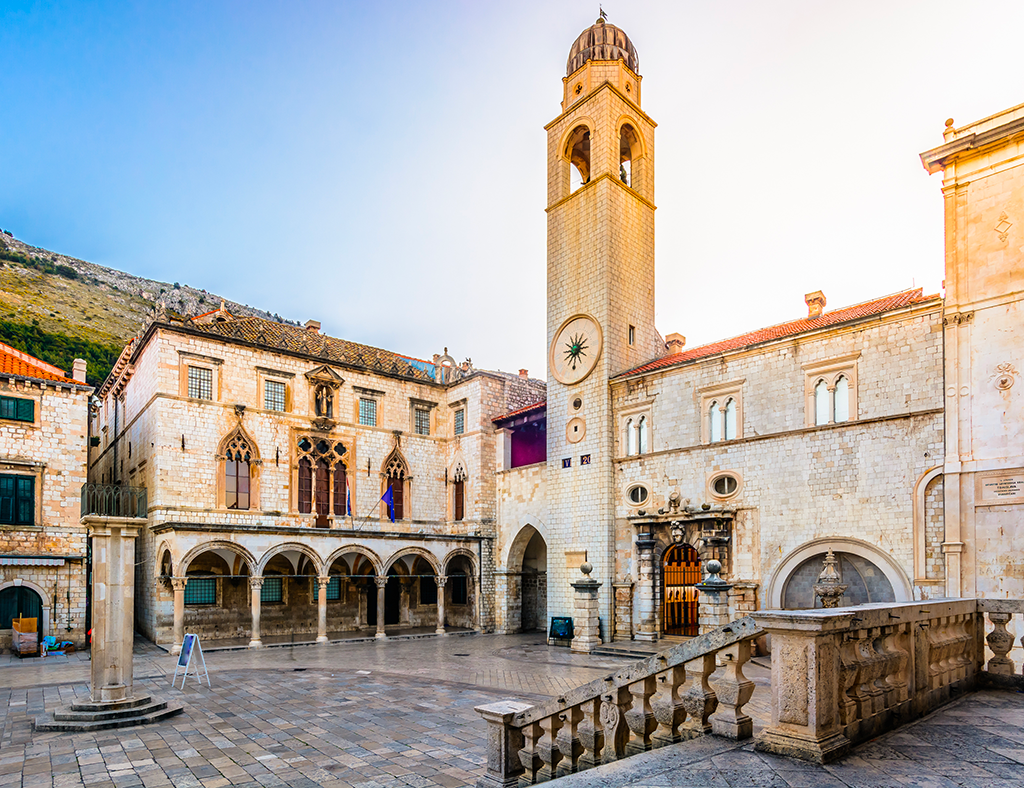
We cross the port and re-enter the citadel through a second gate that leads us to the Cathedral of the Assumption of Mary, a place of great importance since it houses the relics of the patron saint St Blaise. What we can visit today is a reconstruction of the Cathedral: the original, built in the 7th century, was destroyed in the 1667 earthquake. On the right is the Rector’s Palace in Gothic and Renaissance style.
For lunch, we stop at Gundulićeva Poljana, a square enlivened every morning by the flower, fruit and vegetable market and full of cafés and inns. After lunch we visit the Church of St Ignatius, another unmissable stop as it houses the staircase to Cercei Lannister’s famous Walk of Shame. The church steps were designed in 1738 by Pietro Passalacqua on the model of the Spanish Steps in Rome.
We end the day with the Tour of the Walls, considered one of the largest and best-preserved fortification systems of the Middle Ages. The two-kilometre-long route passes through sixteen towers and as many as four fortresses. The Minčeta Tower – the House of Eternals – a historic 14th-century fortification on the north-western tip, is the highest point of the Dubrovnik Walls and offers a spectacular view of the city and the open sea. On the opposite side, the 16th century Revelin Fortress overlooks the old city port and the eastern entrance to the city, the Ploče Gate. In the 14th century, St John’s Fortress defended the harbour from the south-eastern side, while Fortress Bokar defended the Pile Gate and offers the most beautiful view of Fortress Lovrijenac – the Red Fortress – rising 37 metres above sea level. Moreover, the bay overlooked by the Fortress was the scene of the iconic Battle of the Blackwater.
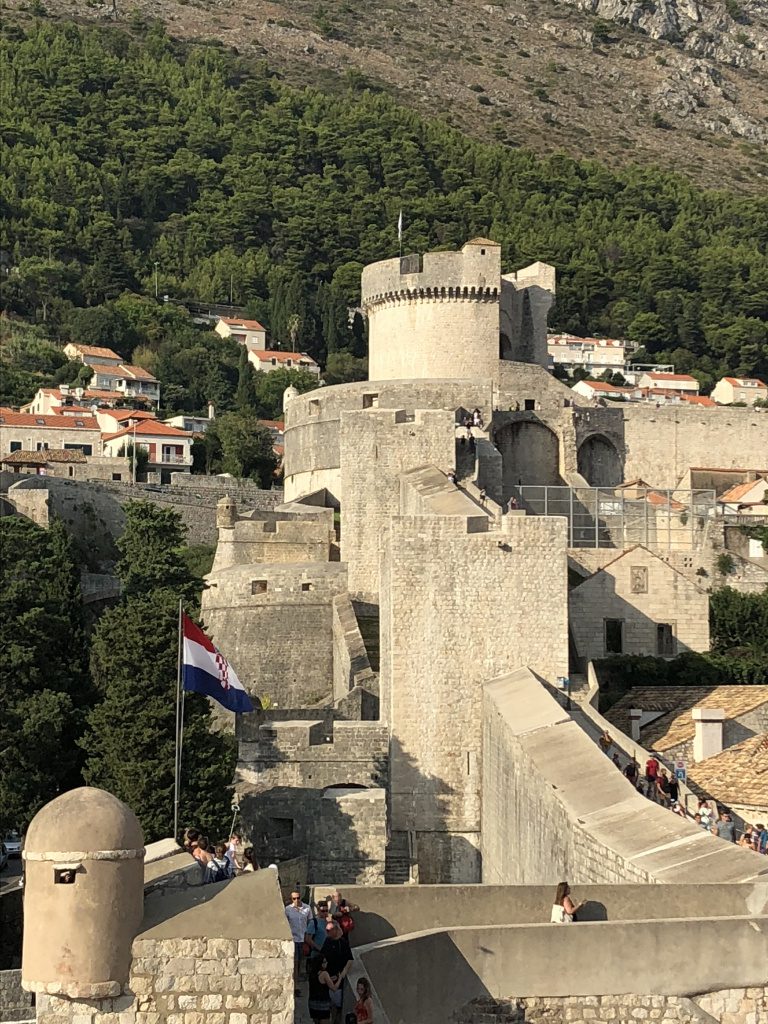
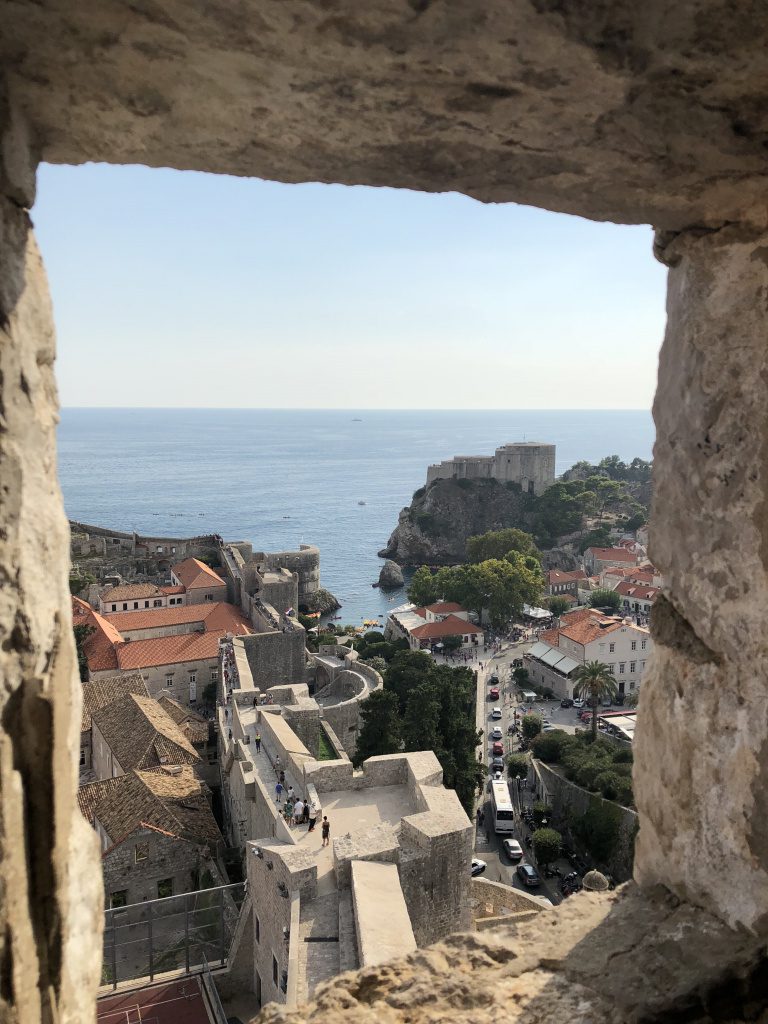
Day 8: Copacabana Beach and Sibenik
Copacabana, located on the Lapad peninsula, is one of the best known beaches in Dubrovnik, not only because of the sea, but above all because it offers comfort, relaxation and plenty of water sports for a fun-filled day out. From the beach there is a beautiful view of the island of Daksu, while on the other side you can see the Franjo-Tuđman Bridge. Let’s rent a jet ski and become children again!
In the late afternoon we arrived in Sibenik, in time for dinner and a stroll through the city’s beautiful alleyways. The initial idea was to arrive just after lunch so that we could spend the whole afternoon wandering around the town, but the beach sucked us in, so I will summarise the stops we wanted to make but which remained in my head:
- Republic Square;
- St. James Cathedral;
- City Hall Sibenik;
- Pilgrims’ Palace;
- Monastery and Church of San Lorenzo;
- St Michael’s Fortress;
- Zapadni ulaz Bedem Šibenik;
- Banj Beach.
Day 9: Krka National Park and Zadar
We dedicate the day to the Krka National Park, the second most visited national park in the country. The park is located in the hinterland of Sibenik and covers an area between the course of the Krka River and the lower reaches of the Čikola River, which meet to create a spectacular landscape. Here you can buy tickets and get the latest information on timetables and prices.
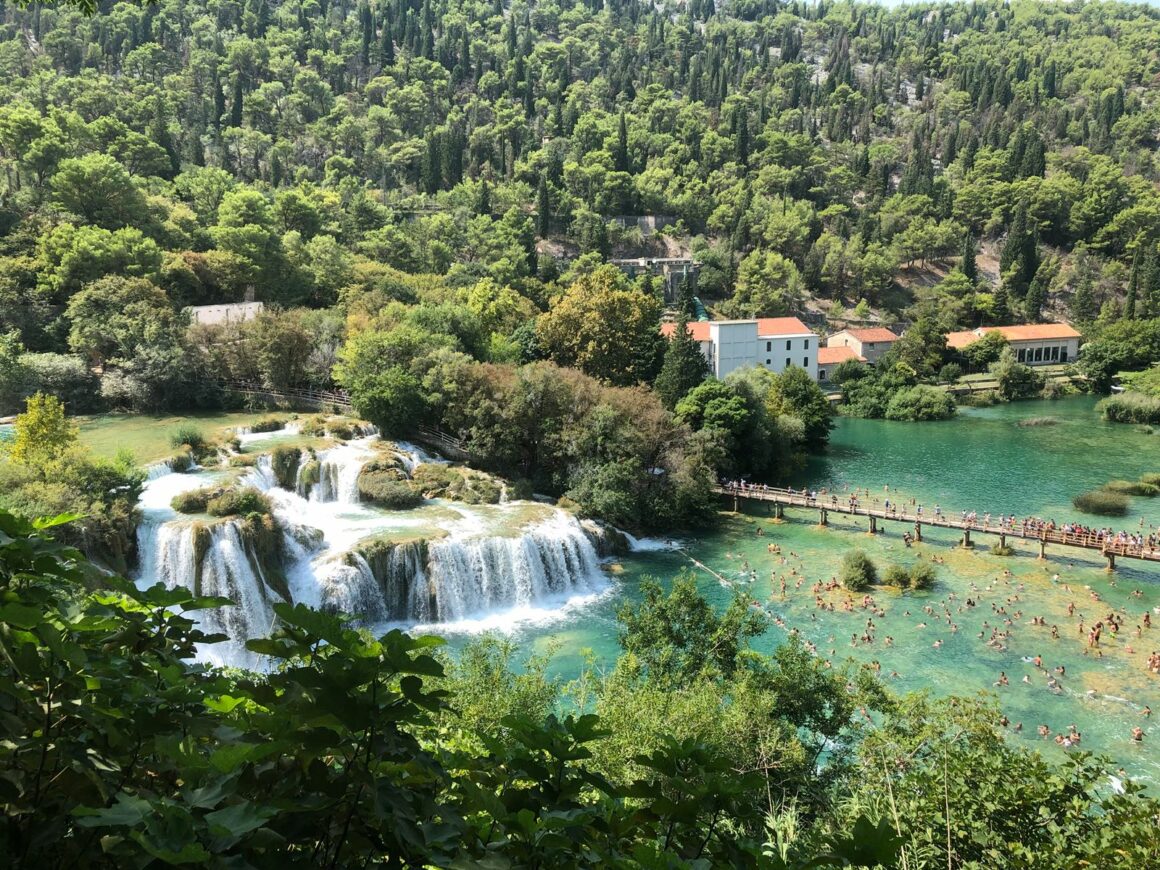
We devoted the morning to the lower part of the park, where the waterfalls are formed by a series of terraces where the Krka and Čikola rivers flow over 17 travertine steps into deep pools before flowing into the next seven waterfalls, creating the famous Skradinski Buk, which towers 45 metres high. Above this section of the river, a path of footbridges and trails has been built through the forest. Along the way, you will come across some restored watermills, some of which have been converted into small souvenir shops and restaurants, while others serve as ethnographic museums. On the left bank of the river are the remains of Croatia’s first hydroelectric power plant and the second oldest hydroelectric power plant in the world – Jaruga I – which operated from 1895 until the First World War when it was dismantled for military reasons.
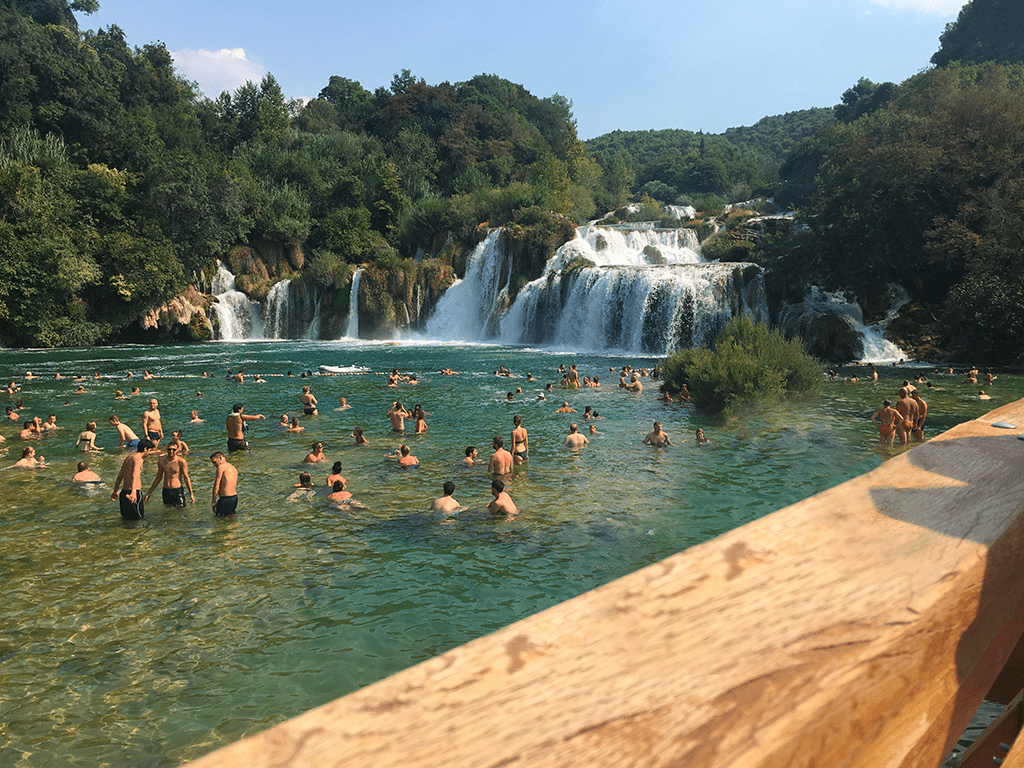
After a big barbecue in the heart of the park, we head up the Krka River towards the Roški slap. The canyon in this part of the river’s course widens out to form a lake: the beginning of the travertine barriers consists of a series of small waterfalls (called the necklace), while in the middle of the course there are small islands and ponds. The main waterfall is located at the end of the barrier and makes a 15-metre drop into Lake Visovac. Here, even in the middle of August, it is not too crowded with tourists, and on the jetty near the mill you can relax and enjoy the peace of the place surrounded by nature.
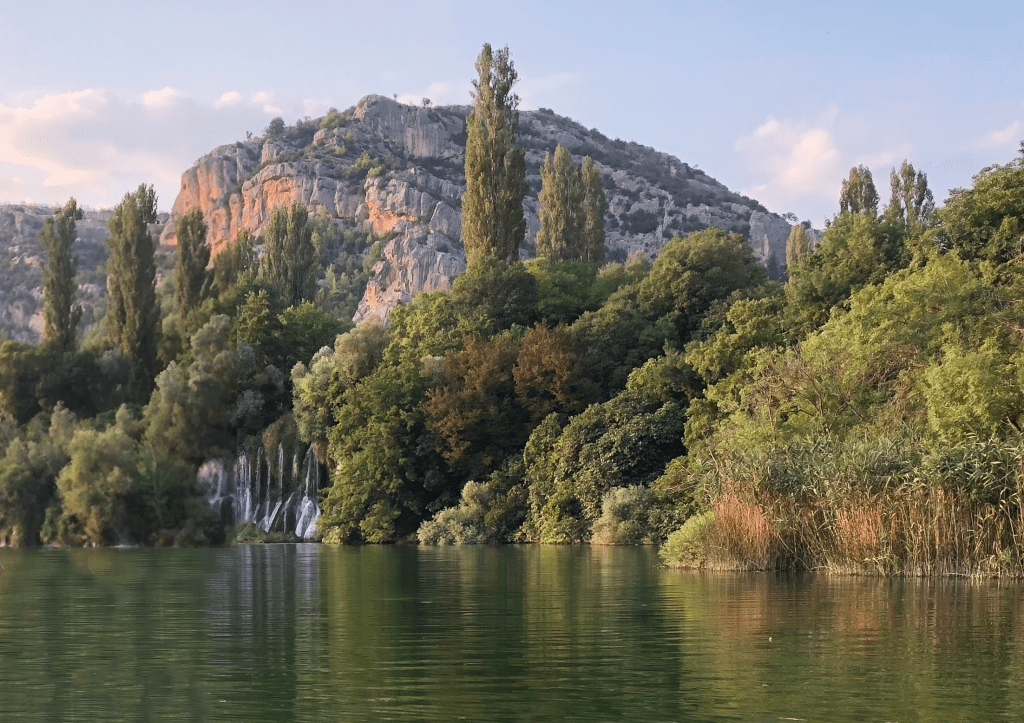
We get back into the car and set off for Zadar. We only stay one night, so we don’t miss the opportunity to end the day by admiring two modern installations that have become major attractions in Zadar and the pride of the place: theSea Organ and the Sun Salutation.
TheSea Organ is a work by architect Nikola Bašić that – by combining human ingenuity and the extraordinary power of nature – allows the sea itself to compose and perform incredible symphonies. The organ consists of seven steps descending towards the sea underneath which 35 pipes are positioned: these are pierced by air that is pushed through by the motion of the sea waves and produce sounds thanks to openings placed under the feet of passers-by.
Continuing along the seafront, one encounters the architect’s second installation, the Greeting to the Sun, a work consisting of 300 glass plates placed on the same level as the stone-paved seafront in the shape of a circle 22 metres in diameter. Next to the main installation (the Sun), looking from the west side there are similar smaller installations representing the other planets of the solar system. Using photovoltaic cells, the work absorbs the day’s solar energy and releases it in a vivid multicoloured graphic display when the sky begins to darken, providing a spectacle of light and colour overlooking the sea.
Day 10: Zadar and Kraljičina plaža
In the morning we visit the main sights of Zadar. We enter the ‘heart’ of Zadar by crossing Gradski Most, from which there is an excellent view of the old city walls.
The first stop is Piazza dei Cinque Pozzi built in 1574 during the siege of the Ottoman Empire’s army to ensure the city’s water supply. Their construction replaced the ancient moats. Nearby is the Torre del Capitano (Captain’s Tower), a pentagon-shaped structure that represents the only remnant of the ancient medieval fortifications.
The Roman Forum, built between the 1st and 3rd centuries B.C., is the largest in Croatia, at 90 metres in size. It has managed to preserve the paving from the period and numerous other remains. The forum also housed the city’s largest temple dedicated to Jupiter. Due to an earthquake around the 6th century AD, many buildings were destroyed.
Behind it is the Church of St Donatus, one of the symbols of Zadar due to its characteristic circular shape ending in a 27 metre high dome. On the east side of the church are three apses. In 1798 it was deconsecrated and used as a military warehouse until 1887 when it became the seat of the Archaeological Museum for some time. Today it is used as a concert and conference venue.
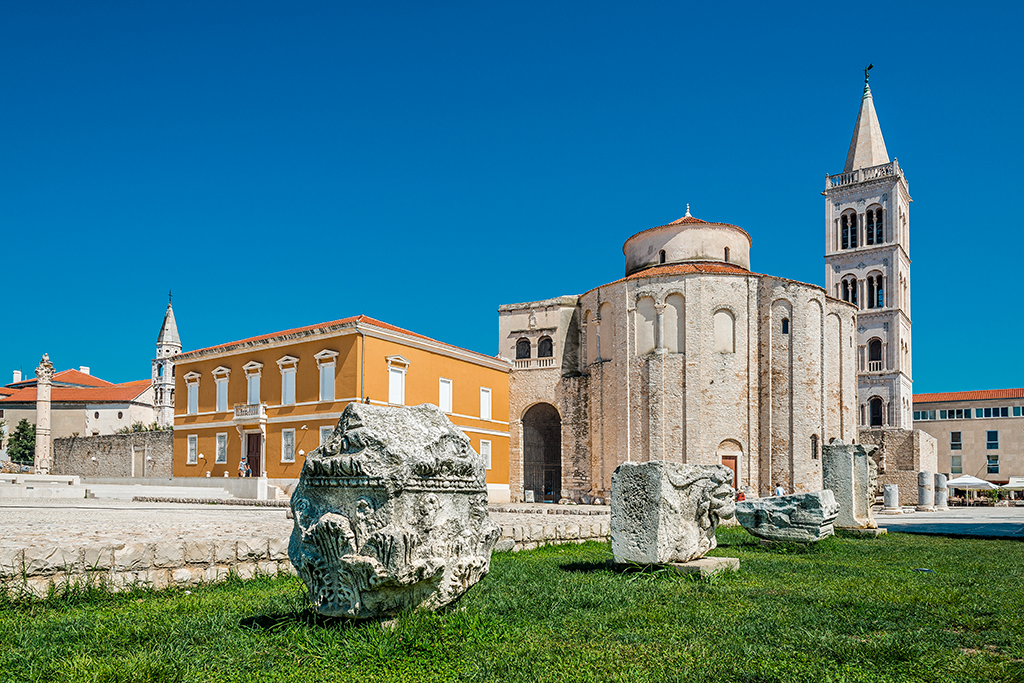
We conclude the tour with the Church of St Anastasia built between 1100 and 1200 over the remains of an ancient church. The façade is characterised by rich decorations. The interior has three naves and on the apse altar is a concrete sarcophagus where the remains of St Anastasia are kept. The cathedral was heavily damaged during World War II and had to be rebuilt. By climbing to the top of the bell tower, one can enjoy a unique view of the town.
Shortly before lunch, we move to the coast for lunch by the sea and one last swim before setting off on our way home. Kraljičina Plaža is a bay where the water level is low and the beach is sandy. Along the shore there are numerous bars where you can have a cool drink or a meal.
Having finished all the Kuna, we set off towards Italy, towards Trieste, an intermediate stop to break the journey home.
Day 11: Trieste and back
Our day in Trieste begins at Piazza Unità d’Italia, famous for being the largest square in Italy overlooking the sea. In the centre is the famous Fountain of the Four Continents. The four statues in the corner of the pool represent Europe with the horse, Asia with the camel, Africa with the lion and America with the crocodile.
We enter the old town and get lost in the narrow streets. We pass underRiccardo’s Arch, which according to some sources is one of the first Roman gates to Trieste built in the 1st century BC in the ancient walls of the Roman Tergeste built by Augustus in 33 BC. The origin of its name could be linked to Charlemagne or Richard the Lionheart’s passage through the city or be traced back to an alteration of the word ‘cardo’ (the Latin name for one of the two main axes of Roman cities).
We ascend the hill via the spectacular Giants’ Staircase and arrive at the Park of Remembrance, characterised by a series of karstic stones on which are written the names of Triestinians who fell in the wars and the units to which they belonged.
The last stop is San Giusto Castle, the symbol of the city. Commissioned by the emperors of Austria, it was built in successive stages from 1468 to 1636, achieving its current appearance as a triangular fortress with bastions at the apexes. It can be visited only in part: in particular, in addition to the lapidary, the chapel, the Caprin Hall, the large inner courtyard – venue for events in the summer – and the ramparts, from which there is a wide panorama of the city.
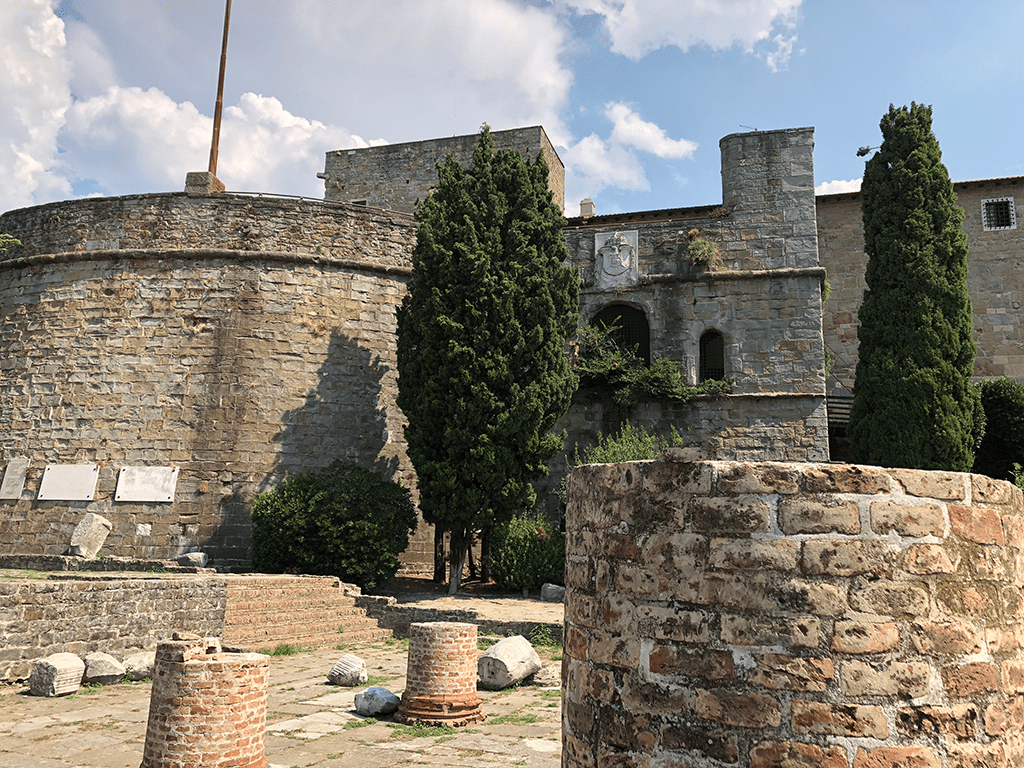
We return home with the feeling that we have missed a lot and that Croatia still has a lot to tell. We promise to visit again soon.
Last modified: 14 June 2025
